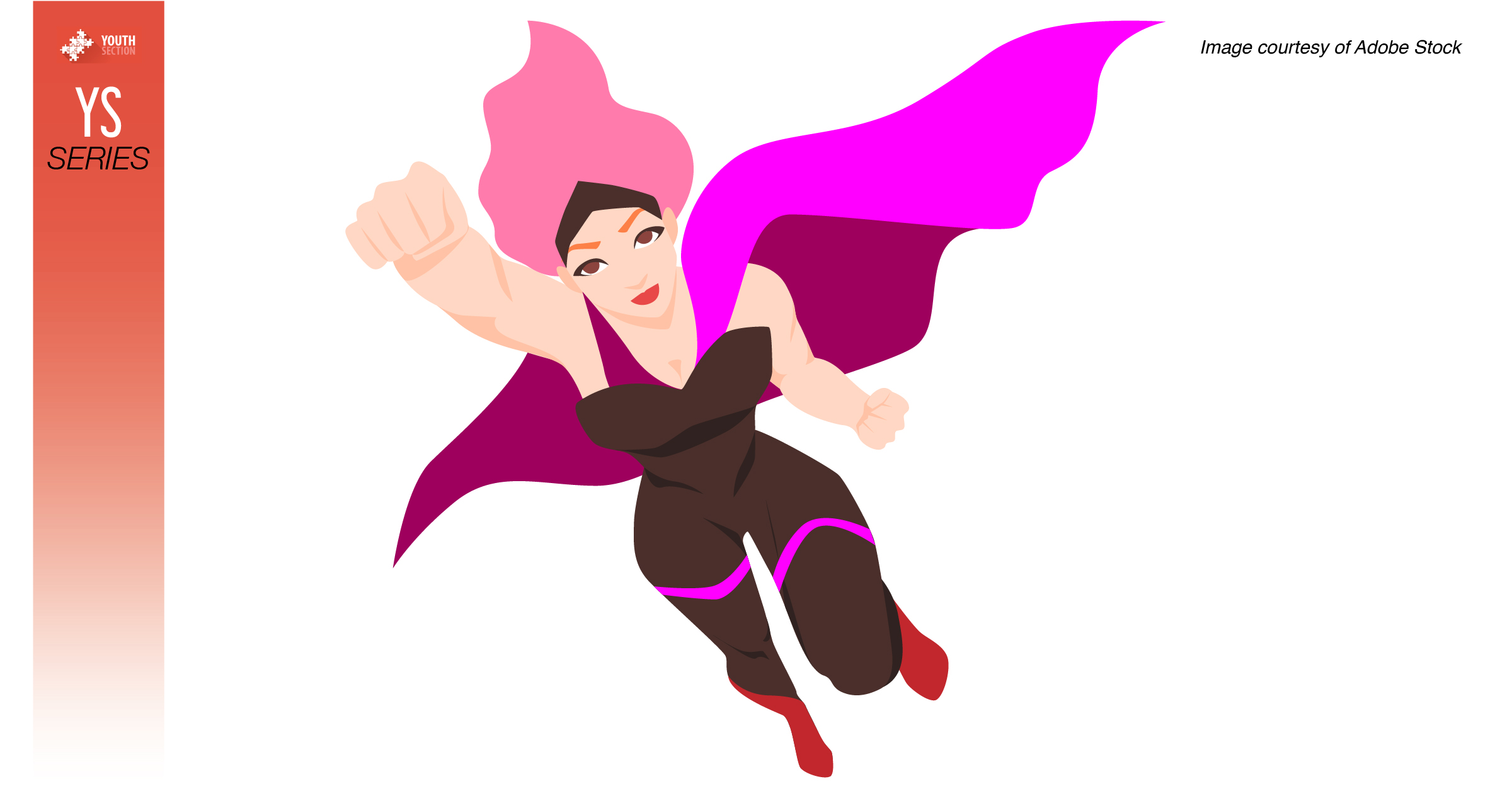Pink – it’s just a color, right? It doesn’t have some sort of hidden meaning attached to the word, right? Since the mid-19th century, pink has been used to represent the social construct of femininity, along with its traditional traits and values. While the more masculine-seeming color blue was assigned to boys, pink was for girls. Gaining traction in the early 21st century, gender reveal parties for babies popularized this distinction even more. Pink and blue: a societal standard.
As a young girl, my hatred for pink was a gradual process. I didn’t know exactly where the bitterness came from, and I didn’t attempt to understand it. On top of that, I tried to be tomboyish as possible. I was involved with multiple sports, I wore sneakers only, and I hated wearing dresses or even owning dresses. The dolls I used to play with gathered dust in storage bins while I proudly displayed some basketball trophies on the top of the shelves instead. There was a pink wall in my bedroom; I begged my parents to look at paint swatches of gray and white because that was what normal was to me.
But why? Why did I go to such extreme measures to reject these feminine parts of my life? Was it because I genuinely hated those things, or was there an underlying reason? The short answer is yes. There was an underlying reason. The problem wasn’t that I hated pink. The problems were the reasons why I hated pink. I didn’t necessarily have a reasonable explanation for my hate then. Now, I can acknowledge it was because of internalized misogyny, a subconscious prejudice within me.
To understand how internalized misogyny manifests, first understand why femininity is hated. Femininity is associated with many words: sensitivity, gentle, nurturing, empathy, and more. It’s a social construct, but the weight of this concept has infiltrated the way we view one another but especially how we view women.
Rejecting one’s femininity and internalized misogyny align quite closely with each other. Usually, it starts at a very young age, when definitions become clear for “cool” and “uncool.” In a review of research on gender identity, it was reported that 30%-40% of girls older than the kindergarten age identify as traditionally feminine, while most girls called themselves tomboys. Seeing yourself as a tomboy isn’t invalid, but what would cause most girls to identify themselves with traditionally masculine traits?
Here, we look to the media. Representation in the media is important, and images of women in the media affect individual perceptions and a collective society. Unfortunately, there is a lack of women behind the camera and writing the stories, so generally, the perspective of the camera represents the male gaze, thus objectifying or hyper sexualizing women. When you have men portraying women as they imagine, it leads to distorted stereotypes. The content of the media warps women’s status in the actual world by encouraging men and women alike to define “woman” in relation to men as objects or family as wives and mothers. Several films depict women who embody feminine qualities as vapid, shallow, and one-dimensional characters. In many romantic comedies, many of the female protagonists undergo some form of change to satisfy the preferences of men or society, such as She’s All That (1999), Grease (1978), or The Princess Diaries (2001). This message tells young viewers that women need to change for a man, therefore diminishing the value of what it means to be a woman by assuming that women act upon their desires for male approval. These types of male-dominated films present women who are not accurate representations of actual women, who have meaningful goals and aspirations. Even with stories with empowering female leads, the antagonist is often an extremely feminine mean girl. Some stereotypical “mean girls” include Amber Von Tussle in Hairspray (1988), Regina George in Mean Girls (2004), and Sharpay Evans in High School Musical (2006). Despite these blatant stereotypes and misrepresentation, the power of media holds strongly, and expectations on the screen translate to expectations in real life. It is completely justifiable that young girls want to alienate themselves from these stereotypes. We have convinced ourselves that a woman could not love both sports and shopping. Unfortunately, the reason for this hatred of femininity is believing that expressing feminine traits equals being superficial and despicable.
The message from the media is those masculine traits are more valuable than feminine traits. Through subconscious thought perpetrated by sexist stereotypes, society as a whole believes that feminine things, such as dressing up in princess costumes, are less worthy than masculine things. This mentality continues in adulthood, when feminine interests, like fashion, are silly and trivial, but masculine hobbies, like sports, are significant and useful.
Embracing femininity is empowerment. It may be easy to see how the construct of femininity is outdated as old, constricting gender norms that once existed in society. I believe we can come to understand those feminine traits like tenderness and vulnerability are not flaws and that there is no need to conform to the outdated stereotypes of women. What if femininity was just the quality of being a woman? Women are always redefining the word as we strive to understand it.
When you say you don’t like pink, are you saying you don’t like the color? Or do you not like what it represents?
Sources:
- Armstrong, Lisa. “What Exactly Is Wrong with Pink?” The Telegraph. Telegraph Media Group, February 13, 2015. http://fashion.telegraph.co.uk/news-features/TMG11408083/What-exactly-is-wrong-with-pink.html.
- Asim, Anusha. “A Deeper Look Into the ‘I Hate Pink’ Phase.” Gen Rise Media, July 3, 2020. https://www.genrisemedia.com/2019/03/22/a-deeper-look-into-the-i-hate-pink-phase/.
- Lagroue, Mary Claire. “Empowerment Means Embracing Our Femininity, Not Rejecting It.” Verily. Verily, December 9, 2015. https://verilymag.com/2015/12/traditional-femininity-gender-male-female-difference.
- Lombrozo, Tania. “Is It Time to Reappropriate Pink?,” November 10, 2014. https://www.npr.org/sections/13.7/2014/11/10/362980907/is-it-time-to-reappropriate-pink.
- Millins, Claire, and Louise Carleton. “Why Hating Pink Is Actually Internalised Misogyny .” Selfish Darling, February 27, 2020. https://www.selfishdarling.com/female-mind/why-hating-pink-is-actually-internalised-misogyny/.
- Scharaga, Jordan. “Female Moments and Male Structures.” JSTOR, 2017. https://digitalcommons.ursinus.edu/cgi/viewcontent.cgi?article=1008&context=media_com_hon.
- Tuchman, Gaye. “Women’s Depiction in Mass Media.” JSTOR. The University of Chicago Press, 1979. https://www.jstor.org/stable/pdf/3173399.pdf?refreqid=excelsior%3A7a31c4134af49e5160444ee784adcf7b.
- Valentini, Jessica. “Modern Women Think Pink Stinks, but My Daughter Taught Me ‘Girly’ Is Great | Jessica Valenti.” The Guardian. Guardian News and Media, November 14, 2014. https://www.theguardian.com/commentisfree/2014/nov/14/modern-women-pink-stinks-daughter-girly-things.
























